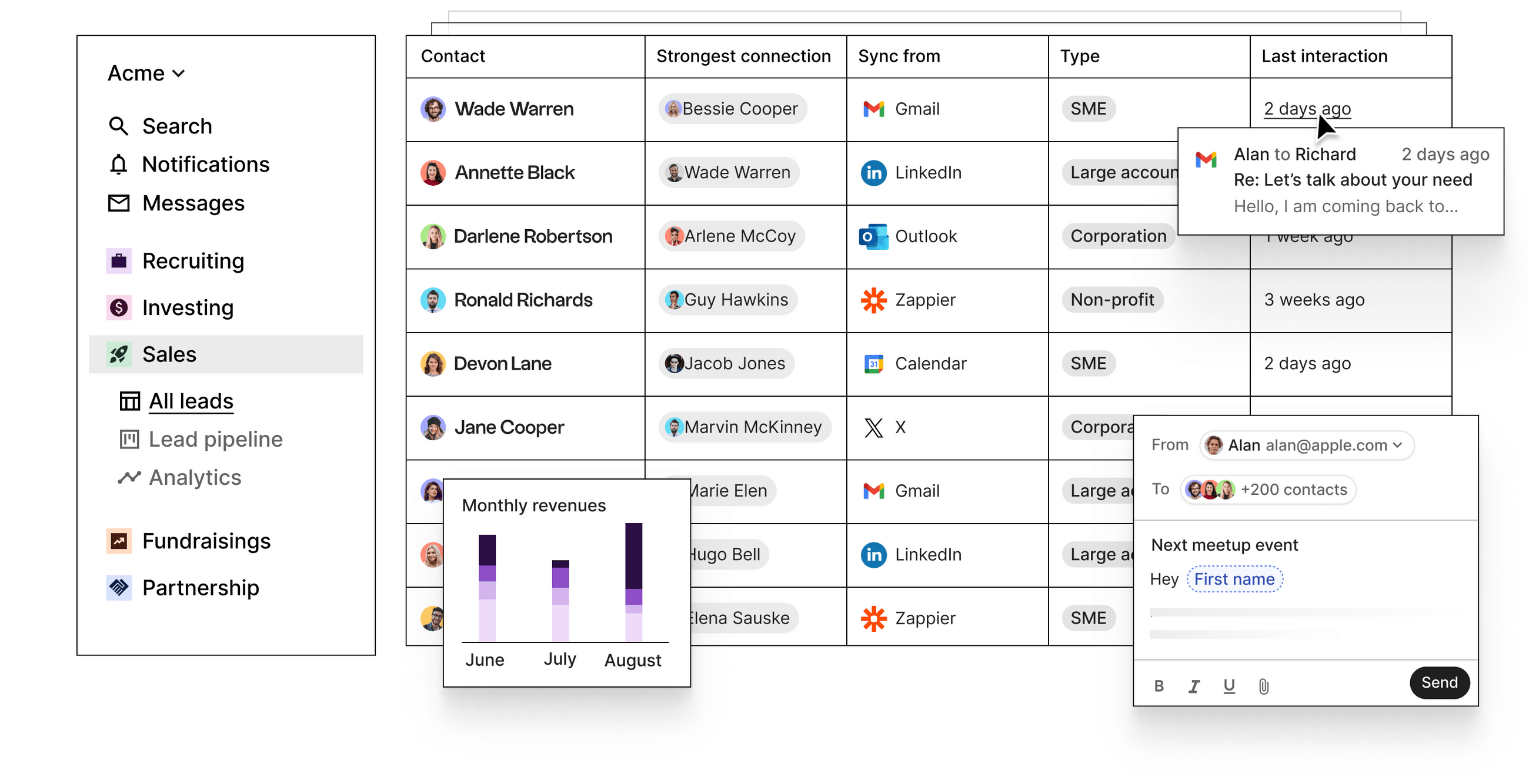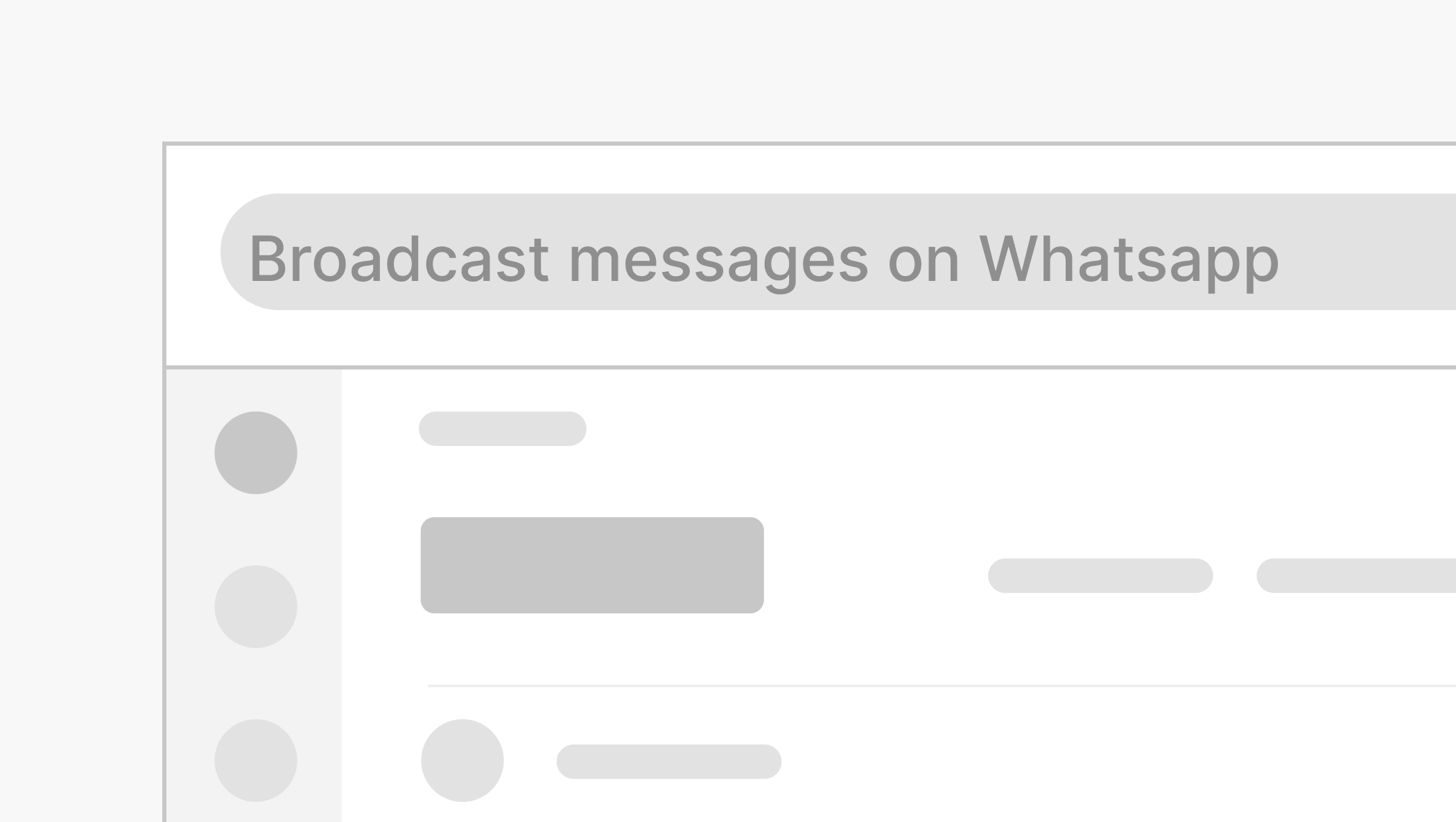What is an email domain

Discover folk - the CRM for people-powered businesses
.png)
Does the email domain you use matter in 2024? The short answer is still yes. Your service provider will affect the overall tech stack you use, your deliverability rate and more. In this blog post, we'll unpack exactly what email domains are, when it's time to upgrade your free email domain to a business email address, how to choose an email domain provider and risks you need to be aware of.
What is an email domain?
An email domain is the part of an email address that comes after the "@" symbol. It is often linked to a domain name, which represents the online identity of an individual or organization. For example, in the email address folks@folk.app, "folk.app" is the email domain. The email domain serves as a unique identifier, ensuring that messages are routed correctly to their recipients.
Using a personal email domain vs custom domain email address
If you're a solopreneur or freelancer wondering whether or not it's time for you to upgrade and to make a move away from using your personal email address to a more personalized email domain. One thing is clear. If you've been sending cold emails from your personal email address to a cold lead without having met them at an event before, it might effect your likely response rate. Having a personalized email domain can have its advantages in this case, and help you appear less random.
The community from Product Hunt suggests that a custom domain email address in this case will help with brand identity and enhance customer confidence. Over 83% of people suggested a custom email domain was the better option.

Email domain vs email address: what's the difference?
An email address is the complete identifier used to send and receive emails, consisting of two main parts: the local part (before the "@") and the domain part (after the "@"). For instance, in folks@folk.app, "folks" is the local part, and "folk.app" is the domain part.
The email domain is a subset of the email address, focusing solely on the domain name component. While the email address identifies a specific user within a domain, the email domain identifies the broader organization or entity managing that email service.
4 risks of choosing your email service providers
Choosing the right email service providers is crucial for email communication, deliverability and potential risks associated with it.
1. Effects your tech stack
Your choice of email service provider can significantly impact your existing technology stack. Different ESPs offer varying levels of integration with other software and services. If your ESP does not seamlessly integrate with your current systems, you might face challenges such as:
- Compatibility sssues: Difficulty in syncing emails with CRM, project management, or other essential tools.
- Workflow disruptions: Increased manual work due to lack of automation and integration.
- Data silos: Fragmented data storage, making it harder to maintain a unified view of your communications.
While CRMs such as folk are compatible with both Gmail and Outlook, some CRMs such as Streak are designed only for a domain email address from Google.

2. Cost
The cost of email services can vary widely depending on the provider and the features offered. Some potential cost-related risks include:
- Hidden fees: Unexpected charges for additional storage, higher send limits, or premium support.
- Scalability costs: As your organization grows, your email needs will increase, potentially leading to higher costs if your ESP charges per user or per email sent.
- Value for money: Not all providers offer the same level of service and reliability. Cheaper options might lack essential features, while more expensive providers might offer functionalities you don't need.
3. Spam filter
Spam filters are essential for maintaining the integrity of your inbox, but they can also pose risks if not properly managed:
- False positives: Legitimate emails may get caught in spam filters, leading to missed communications.
- Reputation impact: If your ESP's spam filters are too lenient, your domain could be associated with spam, damaging your sender reputation.
- Customization: Some providers offer more granular control over spam filtering settings, allowing you to fine-tune your filter to balance security and accessibility.
4. Deliverability
Email deliverability refers to the ability of your emails to reach the recipients' inboxes. Poor deliverability can result in crucial emails landing in spam folders or being blocked entirely:
- Reputation management: Your ESP's practices can affect your domain's reputation. Providers that don't follow best practices may have lower deliverability rates.
- Technical infrastructure: Robust infrastructure ensures that emails are delivered promptly and reliably. Subpar infrastructure can lead to delays and delivery failures.
- Support and guidance: Some providers offer support and best practices to improve your deliverability, helping you navigate issues like IP blacklisting and spam complaints.
How to choose between email hosting providers
Wondering whether or not Microsoft 365 or Google Workspace should host your new domain? Your email hosting services will affect the tech stack you'll be using. You'll want to consider how internal communication will take place – Teams and Slack are two main contenders here. The number of users, multiple domains and guaranteed delivery are all important factors that businesses take into account. On top of that – you also need to consider the CRM you're planning on using. It goes without saying that folk happens to be compatible with both.
What should you look for in a email provider?
1. Microsoft 365
Microsoft 365 is a great option if you often use Microsoft applications. For an annual subscription plan of Microsoft 365, prices start from $6 per user per month. This goes up to $12.50 per user, per month for a business plan and $22 per user, per month for a business premium plan.

Its email hosting services comes with:
- Email, calendar, contacts.
- File storage and sharing,
- File editing and collaboration,
- Voice and video conferencing,
- Instant messaging and team chat.
2. Google Workspace
Google Workspace is great if you often use Google's suite of apps including Gmail, Google Docs, sheets, and more. For an annual subscription plan, plans are divided between business tiers (for companies with less than 10 users) and enterprise tiers. Prices start from $7.20 per user, per month for a business starter plan, $14.40 per user, per month for a business standard plan and $21.60 per user, per month for a business plus plan.
For businesses with a larger team, you'll need an enterprise plan that starts from $27.60 per user, per month for an enterprise standard plan and goes up to $36 per user, per month for an enterprise plus plan.

Conclusion
Choosing the right email service provider is a decision that influences your technological compatibility, costs, spam filtering efficacy, and overall email deliverability. Understanding what an email domain is and how it differs from an email address is the first step in making informed choices that enhance your digital communication strategy. By carefully considering the potential risks and benefits, you can ensure that your email communications remain efficient, reliable, and secure.
More resources
- The modern sales stack for SMBs
- Top 10 best mail merge software in 2024
- Understanding Mail Merge in Outlook vs folk: how to optimize your personalized bulk emails
Ready to use folk?
Discover folk CRM - Like the sales assistant your team never had




.png)

